The Google Nexus 6P Review
by Andrei Frumusanu on December 16, 2015 8:00 AM ESTSoftware UI
In terms of software the 6P is able to sport the latest Android 6.0 Marshmallow, courtesy of course of being a Nexus device. There’s not terribly much to say about the OS that hasn’t been said already by Brandon’s analysis in the review of the Nexus 5X. This is due to the fact that all Nexus devices come equipped with the same software experience, but also due to the fact that Android 6.0 offers very little front-facing changes.
I’ll openly admit that I’m not too much of a fan of the stock Android experience: Over the years Google’s stock Android has always been praised as the “pure” experience and how Android should be. I find this a bit unfortunate as I find there’s a lot of usability flaws in the stock. It’s the simple things that most other OEM skins add that I find the most lacking in stock Android, examples being the lack of an auto-brightness toggle in the quick settings or even having a brightness slider directly available in the notification shade itself which reduces the motions to get to the settings.
My biggest gripe however are the navigation buttons and Google’s lack of an option to reorder them. While I understand the design decision and logic behind having a back button on the left, it makes no sense in terms of usability for the majority of people that are right-handed. The back button is by far Android’s most used navigation button, so I found the Nexus 6P’s larger size to exacerbate the issue as I need to always change grip or stretch my thumb to able to reach it properly. Still having this huge ergonomics issue after this many years is basically inexcusable – the notion that it’s more intuitive to have it on the left is a poor rationale as “unintuitive” use-methods can be learned and taught, but my thumb stopped growing a long time ago and I imagine so did everybody else’s. Virtually all OEMs recognize this issue and either come by default with reversed navigation buttons or by at least offering the option to rearrange them. Here’s hoping that Google listens and adds this as a stock option for future Android releases, similarly how they did for many other past features that were pioneered by third-party vendors.
Ambient display is a great feature that takes advantage of the 6P's AMOLED screen. Every time you pick up the device it will show you a minimalistic greyed out view of your current notifications without having to press any buttons. The detection is a bit finicky and sometimes goes off too easily as I often saw ambient display trigger itself while the device was just laying steadily on my table, and also sometimes when you do want it to go off when you pick up the device it might decide not to. However when it does work it works well, and it also enables you to directly unlock the phone from there. I do wish the display period had been configurable as sometimes where you have a lot of notifications the screen will go back off before you can read all of them.
Other than some of the aforementioned annoyances, the stock Android experience is a good one. In terms of performance, there were some concerns that I’ll reiterate in the PCMark writing sub-test but otherwise the device is fluid as you’d expect it to be. I may be biased when saying this but I just don’t think stock Android is an “exciting” experience or a platform where we see lots of innovation. I’m aware that there are groups who vehemently adhere to Google’s design decisions, but for me personally it just doesn’t do it as it comes with too many daily usability regressions.
NAND Performance
In terms of NAND storage, the Nexus 6P uses a Samsung eMMC module. In fact, this is the same “BGND3R” variant as found in this year’s HTC One M9. For testing I also ran the NAND benchmarks on an unencrypted data partition to be able to analyze Android’s full disk encryption overhead that is now obligatory for all new devices shipping with 6.0 Marshmallow.
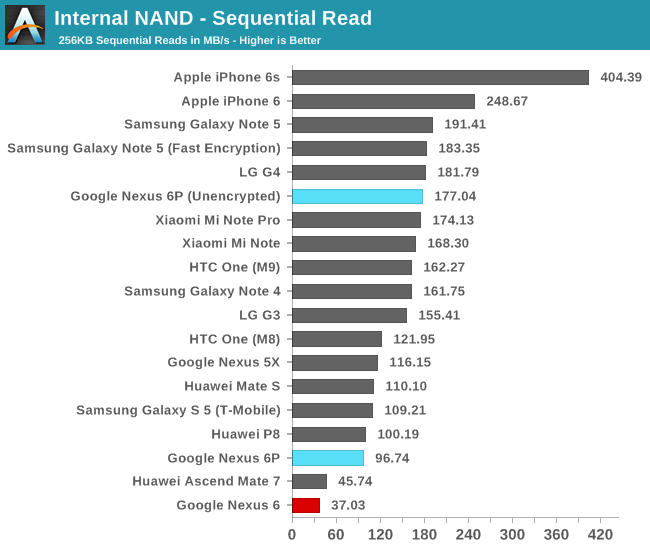
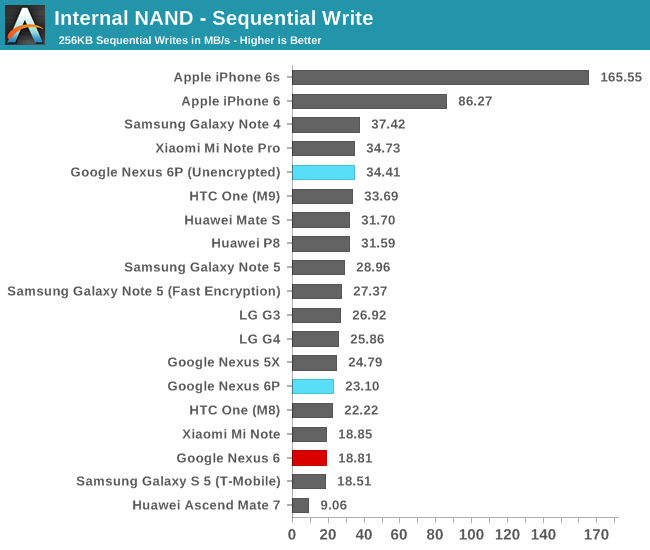
As we can see the unencrypted numbers perform as expected and within range of the HTC One M9’s performance. The encrypted numbers which come as default with the device are the more concerning ones as we see a decrease in read performance of up to 84% and write performance decreases by 43%.
The Nexus 6P uses software decryption, accelerated by ARMv8 cryptography instructions. Google claims that this method is actually faster than using Qualcomm’s Snapdragon built-in SoC dedicated hardware crypto unit, which points out to a possible severe lack of performance and readiness on the part Qualcomm's SoC. We were curious to determine if this was solely an issue for Qualcomm and re-did some encrypted and unencrypted runs on the Note 5 and found that the overhead of encryption on that platform is very minimal, pointing out to that the degradation seems to be limited to Qualcomm's SoCs. It would be interesting to see if the Snapdragon 820 will be able to offer improvements in this regard.
In the end, the Nexus 6P’s out-of-the-box performance on the encrypted data partition seems very lackluster and it may affect application speed. One has to remember that it’s only the data partition that is encrypted, as we see no degradation on the internal or system partitions as they remain unencrypted.
WiFi Performance
The Nexus 6P comes naturally with 802.11ac WiFi in 2x2 MIMO configuration, all powered by Broadcomm's BCM4358 WiFi SoC. This is the same chipset found in other devices such as the Galaxy S6, so hopefully performance will be similar.
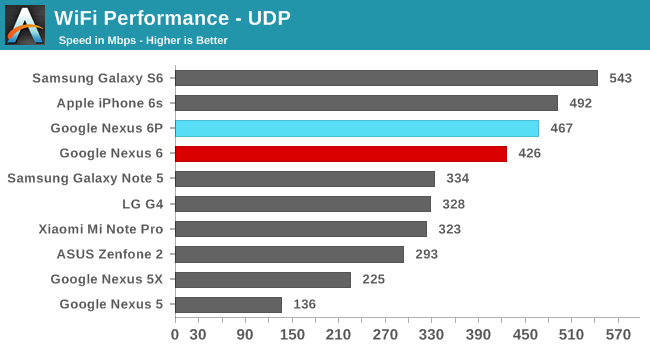
And indeed we see excellent WiFi performance from the 6P as we reach up to an average of 467Mbps, up there among one of the fastest WiFi implementations in today's smartphones.


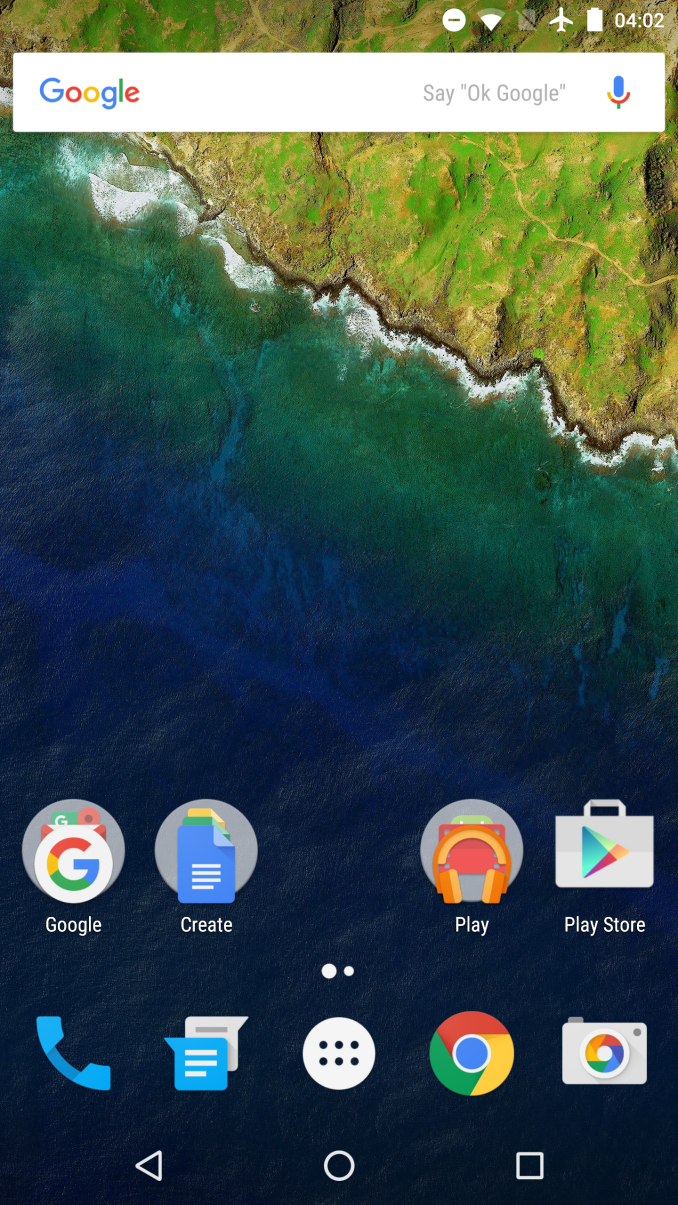
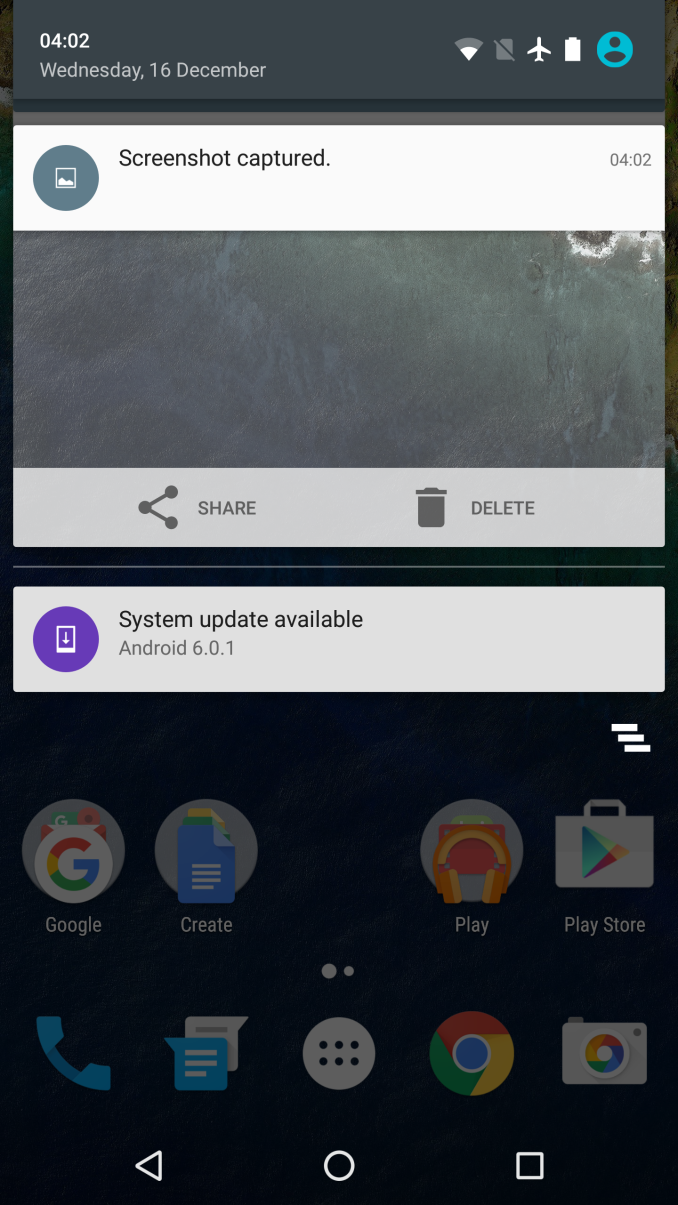
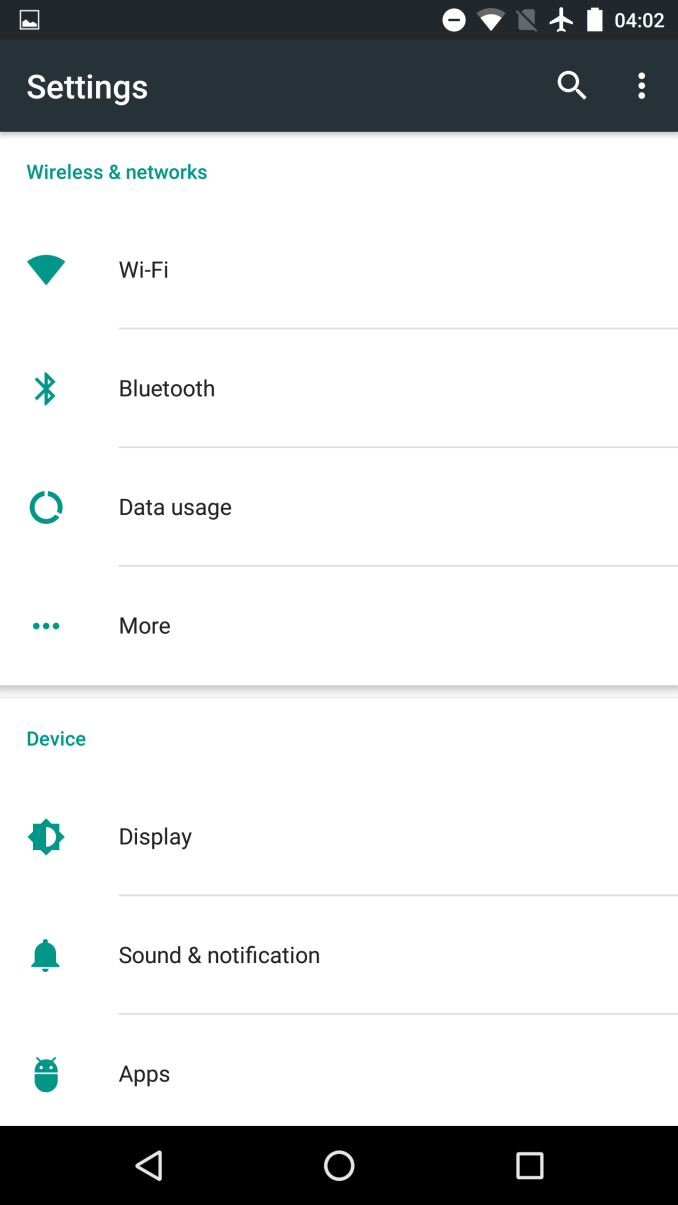









219 Comments
View All Comments
isoftpreeti - Wednesday, January 6, 2016 - link
Display: 5.7 inches; WQHD (2560 x 1440) AMOLED display at 518 ppiDimensions: 159.3 X 77.8 X 7.3 mm
Weight: 178 grams
Storage: 32GB, 64 GB, or 128GB
Memory: 3GB LPDDR4
Processors: Qualcomm Snapdragon 810 processor, 2.0 GHz Octa-core 64-bit; Adreno 430 GPU
Front camera: 8MP camera; 1.4 µm pixels; f/2.4 aperture
Rear camera: 12.3 MP; 1.55 µm pixels; f/2.0 aperture, 4K video
Connectivity: Wi-Fi 802.11a/b/g/n/ac 2x2 MIMO, dual-band (2.4 GHz, 5.0 GHz); Bluetooth 4.2; NFC; GPS, GLONASS
Colors: Aluminium, Graphite, Frost, and Gold (Japan only)
This is one of the best mobile phone from google Nexus. Mobile application development company in India like I-SOFTINC TECHNOLOGIES always help to improve the mobile application development and its features by adding new features and technologies.
Gard Vikingstad - Friday, January 15, 2016 - link
AndroBench 4 results running on my 128GB Nexus 6P (encrypted):Seq read: 272.4 MB/s Seq write: 95.2 MB/s Rand read: 19.7 MB/s Rand write: 9.3 MB/s
Louismiami04 - Sunday, February 7, 2016 - link
CommentsView All Comments
Post Your Comment
This comment is apparently spam and we do not allow spam comments.
Louismiami04 - Sunday, February 7, 2016 - link
CommentsView All Comments
Post Your Comment
This comment is apparently spam and we do not allow spam comments.
evozero - Monday, February 22, 2016 - link
Request: Can Anandtech bring back the Camera Focus Latency [AF speed] and Camera Shot Latency [shutter lag] charts? This is one of the rare places where camera af speed and shutter lag can be compared.jimmyblake - Monday, February 29, 2016 - link
I've recent purchased a 6P after using a iPhone 6S for the past several months and with the same apps and use profile I'm getting around a third/quarter of battery life I was getting on the iPhone - those comments around the AMOLED screen and Snapdragon 810 processor seem to be the case.Love the phone/OS, hate the battery life.
jimmyblake - Monday, February 29, 2016 - link
recently^ - never post at 06:50 AMstrikerrocket - Sunday, April 3, 2016 - link
I'm French, the Nexus 6P is listed at $649 in the US, and this translate as €799 in France, WTF? Maths telle me that at the current rate it shoudl be €569. I will NEVER buy this! It's a complete RIP OFF and absolutely impossible to justify! This is sick, that's $910 in US DOLLARS! Unbelievable!Joshua tree - Sunday, June 12, 2016 - link
Seems strange i just purchased the 6p in Australia coming in from Hong Kong.The price was $713.00AU for the 64GB model and included a 3 year warranty. US comparison allowing for the exchange rate would be $499.00 US